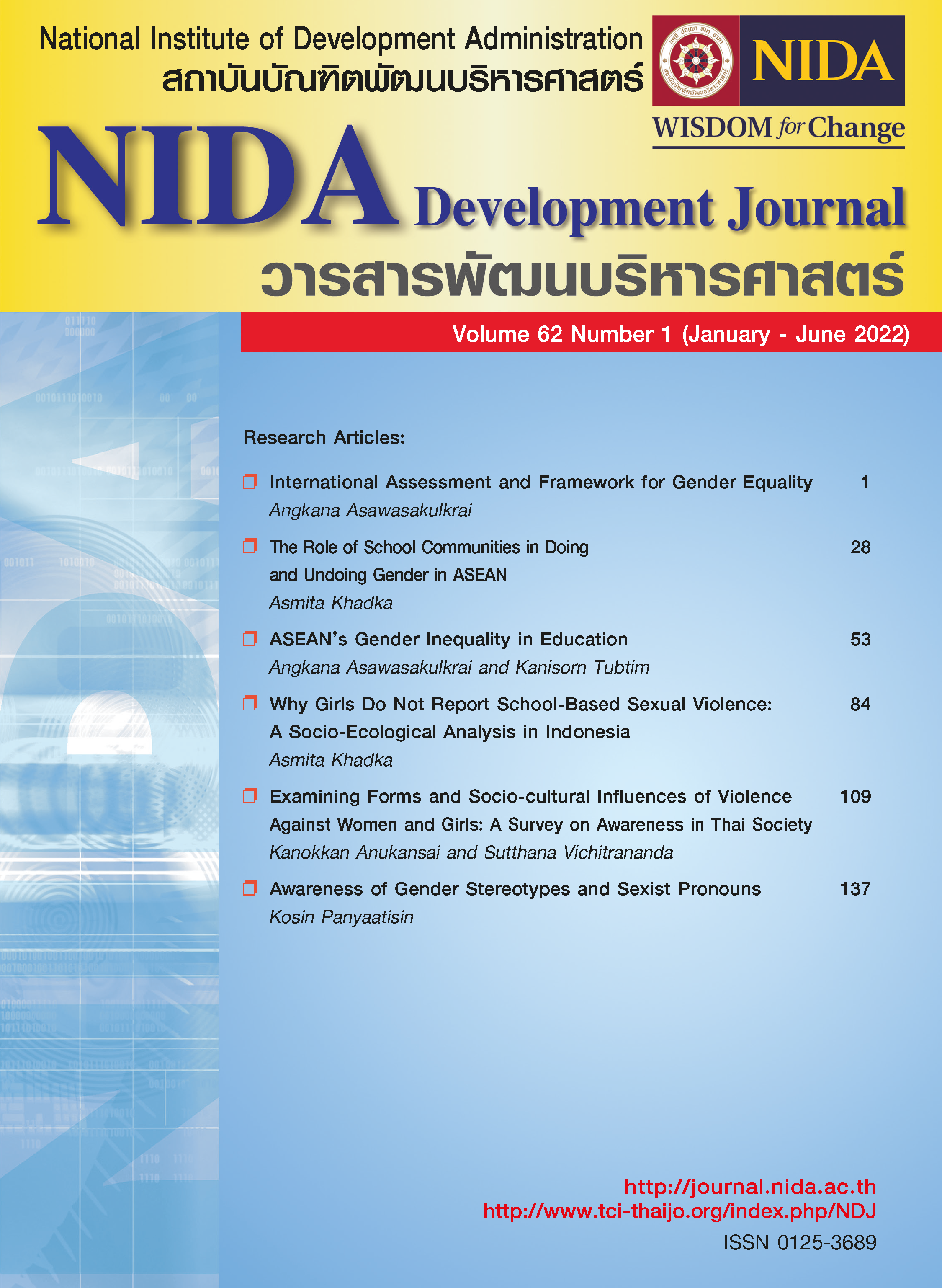Awareness of Gender Stereotypes and Sexist Pronouns
Keywords:
Gender stereotypes, Bias, Equality, Textbook, PronounAbstract
Gender inequality is firmly entrenched in every society. We learn how each person should be treated through language socialization. Early in life, one is implanted with ideas that women and men are different and should be treated differently. Stereotypic characteristics are baselessly assigned to women who, as a consequence, are constrained from attaining their maximum potential. Language in textbooks, without our realization, turns out to be the channel through which wrong ideas get passed on to our young. This study investigates language in textbooks which are loaded with gender stereotypes and sexist language to find out if the students are aware of them. It also interviews the instructors to see if they consider gender stereotypes and sexist language detrimental to the mind of their learners. Through questionnaire administration and interviews, the findings revealed that learners were indeed aware of the existence of gender biases. However, a notable inclination among lecturers can be observed whereby they tended to downplay the issue as relatively inconsequential and disconnected from the learning materials.
References
Bem, S. L. (1974). The measurement of psychological androgyny. J. Consulting Clin. Psychol. 42, 155–162. doi: 10.1037/h0036215
Center for Philanthropy and Civil Society. (2021). Gender equality in education: An ASEAN sourcebook. Center for Philanthropy and Civil Society, National Institute for Development Administration. TPN Press.
Center for Philanthropy and Civil Society. (2019). Best Practices: The elimination of gender stereotypes and sexist language in education materials in primary and secondary levels. Center for Philanthropy and Civil Society, National Institute for Development Administration, Bangkok, Thailand.
Concordă, E. (2018). Gender stereotypes in school textbooks. Revista Românească pentru Educaţie Multidimensională, 10(4), 65-81. https://web.s.ebscohost.com/ehost/pdfviewer/pdfviewer?vid=0&sid=b203a4f5-596e-4607-9438-fdf523e7a881%40redis
Deaux, K., & Lafrance, M. (1998). Gender. In D. T. Gilbert, S. T. Fiske, & G. Lindzey (Eds.), The handbook of social psychology (pp. 788–827). McGraw-Hill.
Devine, P. G., & Sharp, L. B. (2009). Automaticity and control in stereotyping and prejudice. In Handbook of prejudice, stereotyping, and discrimination, T. D. Nelson (Ed.), pp. 61–87. New York: Psychol. Press
Eagly, A. H. (1997). Sex differences in social behavior: comparing social role theory and evolutionary psychology. Am. Psychol. 52, 1380–1383. doi: 10.1037/0003-066X.52.12.1380.b
European Institute for Gender Equality (2015, October 19). Gender Equality Index 2015 - Measuring gender equality in the European Union 2005-2012.https://eige.europa.eu/publications/gender-equality-index-2015-measuring-gender-equality-european-union-2005-2012-report.
Fiske, S. T., Bersoff, D. N., Borgida, E., Deaux, K., & Heilman, M. E. (1991).
Social science research on trial: Use of sex stereotyping research in Price Waterhouse v. Hopkins. American Psychologist, 46(10), 1049.
Garg, N., Schiebinger, L., Jurafsky, D., & Zou, J. (2018). Word embeddings quantify 100 years of gender and ethnic stereotypes. Proceedings of the National Academy of Sciences, 115(16), E3635-E3644.
Gederman, Dina (2019). How gender stereotypes kill a woman’s self-confidence. https://hbswk.hbs.edu/item/how-gender-stereotypes-less-than-br-greater-than-kill-a-woman-s-less-than-br-greater-than-self-confidence
Ghazaryan, G. (2022, December 25). A man’s world? Gender stereotypes and underrepresentation of women in textbooks. EVN Report. https://evnreport.com/raw-unfiltered/a-man-s-world-gender-stereotypes-and-underrepresentation-of-women-in-textbooks/
Heilman, M. E. (2012). Gender stereotypes and workplace bias. Research in Organizational Behavior, 32, 113-135.
Jasmani, M. F. I. M., Yasin, M. S. M., Hamid, B. A., Keong, Y. C., Othman, Z., & Jaludin, A. (2011). Verbs and gender: The hidden agenda of a multicultural society. 3L, Language, Linguistics, Literature, 17.
Lee, J. F., & Collins, P. (2008). Gender voices in Hong Kong English textbooks—Some past and current practices. Sex Roles, 59(1), 127-137.
Noble, H., & Heale, R. (2019). Triangulation in research, with examples. Evidence-Based Nursing, 22(3), 67-68.
Sniezek, J. A., & Jazwinski, C. H. (1986). Gender bias in English: In search of fair language. Journal of Applied Social Psychology, 16(7), 642-662.
Spence, J. T., & Buckner, C. E. (2000). Instrumental and expressive traits, trait stereotypes, and sexist attitudes what do they signify?. Psychology of Women Quarterly, 24(1), 44-62.
United Nations. (2022, November 11). Sustainable development goal 5: Gender equality. https://sdgs.un.org/goals/goal5
United Nations. (2020, July 19). Gender stereotyping: OHCHR and women’s human rights and gender equality. https://www.ohchr.org/en/women/gender-stereotyping
Widdowson, H. G. (2000). On the limitations of linguistics applied. Applied Linguistics, 21(1), 3-25.
Wood, W., & Eagly, A. H. (2015). Two traditions of research on gender identity. Sex Roles, 73(11), 461-473.
Downloads
Published
How to Cite
Issue
Section
License
Copyright (c) 2023 NIDA Development Journal

This work is licensed under a Creative Commons Attribution-NonCommercial-NoDerivatives 4.0 International License.





